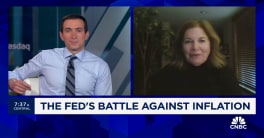The Joint Center for Housing Studies at Harvard University recently released an interesting look at trends in housing debt and home equity by age group.
Entitled �Emerging Cohort Trends in Housing Debt and Home Equity, the study by George S. Masnick, Zhu Xiao Di, and Eric S. Belsky was prepared for presentation at the Annual Meeting of the Population Association of America to be held in Philadelphia, March 31 to April 2, 2005.
The study looked at age groupings of the U.S. population in ten year increments: 15-24, 25-34, up to 65-74 and then over 75 years of age, measuring several characteristics: amount of mortgage debt carried by homeowners, home equity, and amount spent on housing-related expenditures as a share of income. Populations were further divided into married and un-married persons and compared data from 1990 and 2000.
The study found some very real changes in debt patterns. It recalled the days where a homeowner labored 20 years or so to pay off the mortgage, a rite of passage that was sometimes even the cause of a celebratory �burning the mortgage� party. The elimination of this debt freed up significant funds which the homeowner could divert to increased consumption or, more likely to funding retirement.
Today, the amount of mortgage debt carried by homeowners as they approach historical retirement age has been increasing and the share of persons who have �burned the mortgage� as they near the end of employment has been declining. Home owners more and more perceive the equity in their homes as a liquid asset and are tapping into that equity by refinancing or taking out home equity loans or second mortgages. These equity-into-cash strategies are being used to fund a variety of household or personal expenses or to shift other debt into tax deductible housing debt.
Whereas, in 1989, 54 percent of homeowners in the 55 to 64 age cohort were mortgage free, by 1998 that number had declined to 39 percent.
In addition to changing attitudes toward debt, the study pointed to later age at marriage, divorce and remarriage, the rise of the two paycheck family, increasing life expectancies and the resulting delay of retirement, increases in education and health care costs, and increased housing consumption as contributing to the emergence of higher mortgage debt late in life.
Homeowners in all age groups have taken on significantly more debt of all kinds. According to the Federal Reserve Board�s Survey of Consumer Finances, total debt for home owning households increased from $2.4 trillion to $4.1 trillion between 1990 and 2000 and the average debt grew from $40,600 to $58,700 (in 2001 dollars.) The percentage of this total debt represented by housing debt also increased. By 2000 roughly 60-80 percent of total debt was due to housing debt across all age groups. This trend is particularly striking in the oldest age groups. In 1990 housing debt represented less than 50% for those over the age of 75 and was declining with advancing age. In 2000 the figure had increased to well over 60% and was increasing with age.
Tracking the changes for individual cohorts in median levels of housing debt during the ten year period dramatically shows the emerging increases in housing debt for younger and middle age owners. In 1990, median housing debt for 45 to 54 year olds, the first wave of baby boomers, was just over $25,000 in 2001 dollars. By 2000, the cohort that had moved into that age group was carrying median housing debt of about $50,000.
�Extrapolating these cohort trajectories forward 10 years,� the study states, � while certainly not sophisticated, suggests that the next group of 45-54 year olds in 2010 (the youngest of the baby boomers) may well have a median housing debt of over $70,000 based on debt levels for this group in 2000 when they were 35-44. But what actually occurs will be heavily influenced by the rate of house price appreciation this decade.�
Married couples have been the driving force behind the trends in increasing housing debt for the middle age groups. Unmarried homeowners have certainly experienced increases in housing debt, but they lag far behind their married peers. While median housing debt for the younger cohorts in the study, if married, topped out at $80,000, unmarried homeowners did not exceed $50,000 in median housing debt in any age group.
The debt trends, the study states, are not necessarily cause for alarm if they are matched by increases in the value of housing. But, if housing values were to suddenly drop or interest rates suddenly rise, housing would become a less liquid asset and homeowners would not necessarily be able to do cash-out refinances or sell their homes in the event of a financial reversal.
Federal Reserve data confirms that the value of housing owned by each successive cohort has increased on a higher value trajectory than the group before it. This is reflective of the higher initial price paid by younger buyers along with strong housing appreciation but also because of their ability (fostered by lower interest rates and higher salaries) to move up in the housing market. The steepest increase of all is in the youngest cohort, 25 to 34 years of age. In 1990 the median price of a home owned by a head of household in that age group was around $50,000. In 2000 it was over 100,000. As age increases, the trajectory flattens (in the oldest group it went from around $98,000 to $118,000. This probably reflects the lack of mobility in the older age groups. Census data indicate that only 30 percent of 65-74 year olds and 20 percent of those over 75 changed residence in that ten year period.
The larger increase in housing values among the younger age groups probably reflects trading up in the housing market as income and family size increase. Low mortgage rates and an easing of credit terms have accelerated this trend and it made it easier to carry a larger housing debt
In addition to carrying less debt, unmarried homeowners have not seen the price appreciation of their married peers. Appreciation within unmarried cohorts has been nearly flat (indeed negative in the 35 to 44 age group) except for the youngest and oldest age groups. The upper two groups showed the steepest increases, but the study pointed out that this may be a factor of married homeowners moving into unmarried status following the death of a spouse.
This lack of appreciation in housing owned by the unmarried, the study states, is probably reflective of a tendency of the unmarried to purchase smaller homes, condominiums, mobile homes, or older stock in more urban areas. The older groups of the unmarried may also contain a sizeable percentage of recently divorced who have experienced a downturn in disposable income.
But what about equity? For married owners in all cohorts, growing home values did result in increased equity, even with growing debt. Median home equity increased $20,000 to $30,000 in the ten year period in each cohort except 45 to 54 where the increase was less than $10,000. Unmarried owners, again, did not far as well. While the older unmarried did show substantial increases (perhaps reflecting the retirement of mortgage debt) in most age groups equity growth was flat or negative.
The study concludes by predicting that high housing debt as each successive cohort approaches retirement age could have several repercussions. Debt may force older homeowners to continue in the workforce in order to carry housing expenses or to sell their homes in order to downsize the debt. It may also increasingly drive people of retirement age to locations where housing stock is less expensive. Where deferred retirement, downsizing, or relocation are not realistic, �housing debt in old age could divert money away from spending on other necessities such as food, heat, and utilities or health care.
The entire study, in a PDF file, can be read at www.jchs.harvard.edu. Click on W05-1
More MND Newswire:
Other points of Interest
CNBC - 10:05 AM
CNBC - 10:00 AM
CNBC - 10:00 AM
Trending News
-
Thu, 3:36 PM
-
Thu, 11:12 AM
-
Today, 11:33 AM
-
Today, 10:06 AM
How would you like to share this content?
Share via Social Media:
All social media shares will include the image and link to this page.







